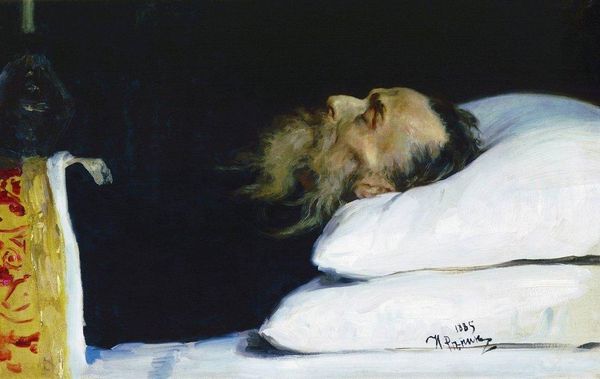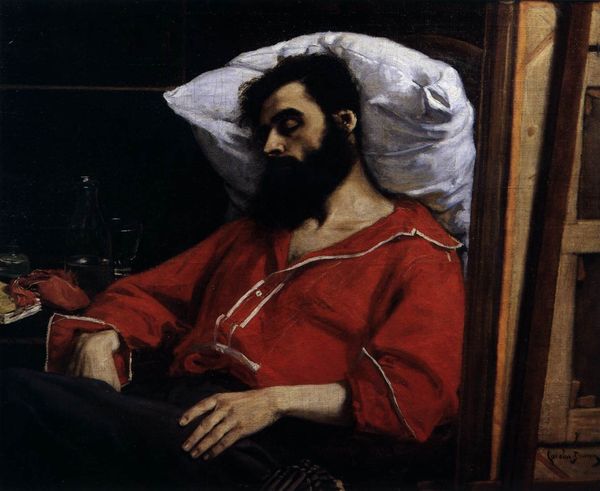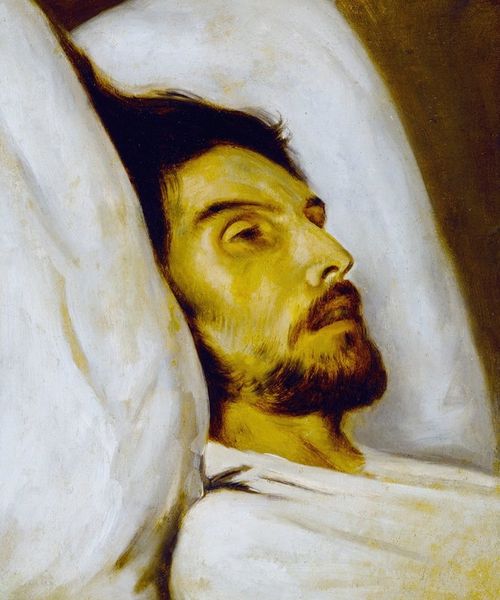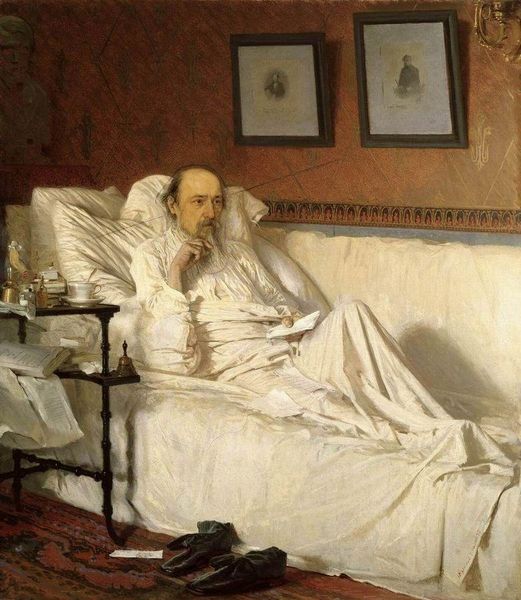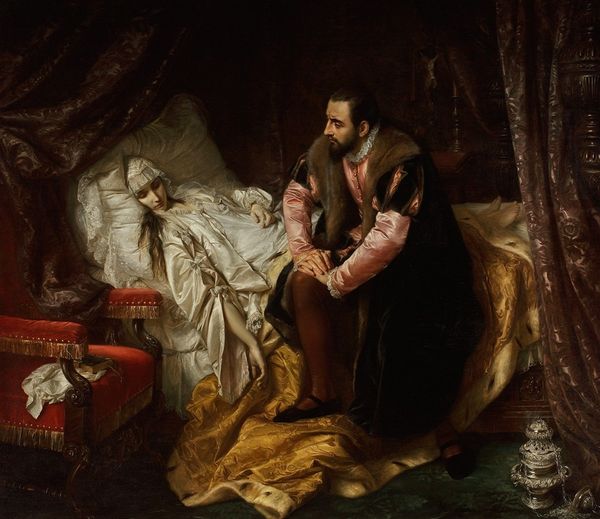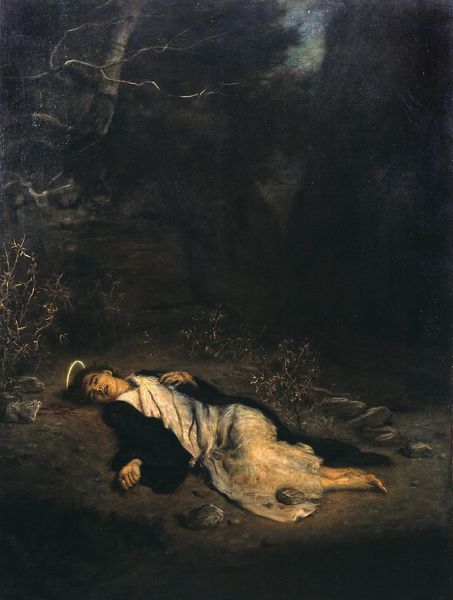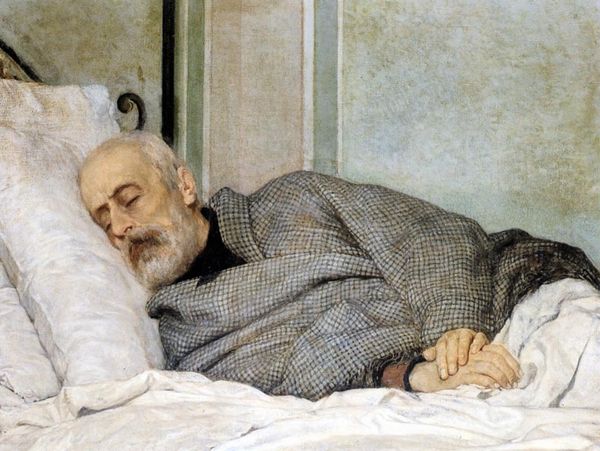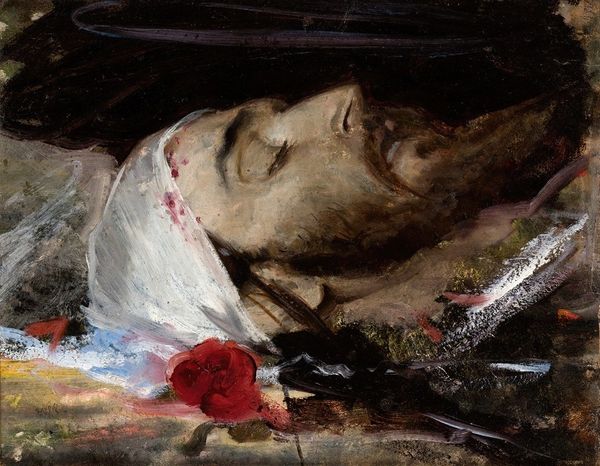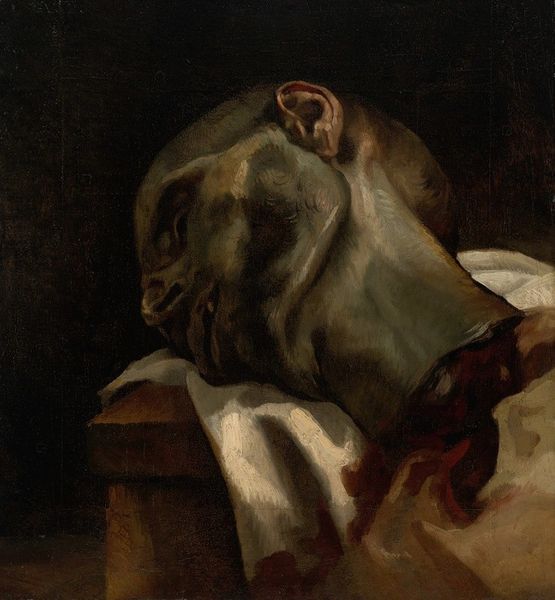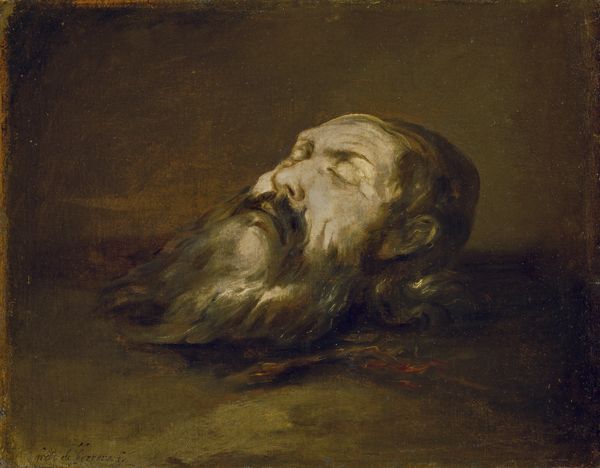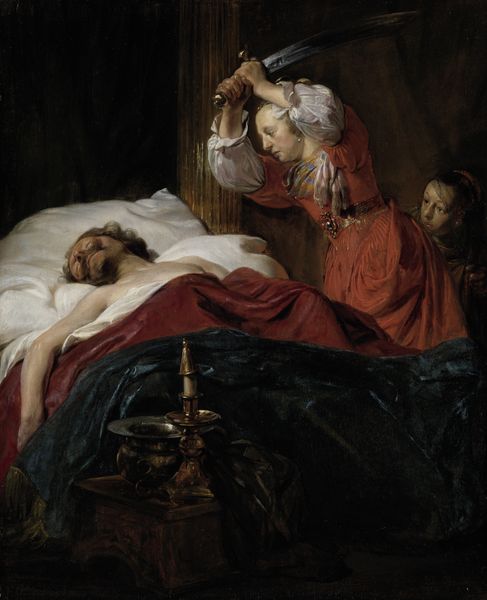
Emperor Alexander II on His Deathbed 1881
0:00
0:00
Dimensions: 85.5 x 61 cm
Copyright: Public domain
Editor: Here we have Konstantin Makovsky's "Emperor Alexander II on His Deathbed," painted in 1881. It’s oil on canvas and, wow, it's incredibly somber. What can you tell us about it? Curator: Well, consider the labor involved. Makovsky meticulously recreated Alexander II's likeness posthumously. The opulence of his uniform, painstakingly rendered, signifies the vast resources commanded by the Tsarist regime, built upon the exploitation of peasants. Don't you find the juxtaposition of imperial grandeur with the stark reality of death…pointed? Editor: It is striking. The uniform seems almost too bright, too detailed against the darkness. Is it meant to be critical of the Tsar? Curator: Perhaps. The application of the oil paint itself becomes a commentary. Think about it: pigment, derived from the earth, refined and manipulated through industrial processes, is used here to depict the very figure whose power stemmed from that same earth and its laborers. How can we divorce the artwork from its means of production? Editor: I hadn’t thought of it that way. So, you’re saying the painting isn't just a depiction, but an embodiment of the socio-economic forces at play? Curator: Precisely. And what does it tell us about the relationship between power, artistic creation, and ultimately, mortality? This is more than a simple portrait; it's a material testament to a complex web of power relations. Editor: This gives me a lot to consider. Thanks for pointing out what's under the painting's surface. Curator: My pleasure. It's vital we examine not just what art *is,* but *how* it is made and the stories of those whose hands brought it to life.
Comments
No comments
Be the first to comment and join the conversation on the ultimate creative platform.
